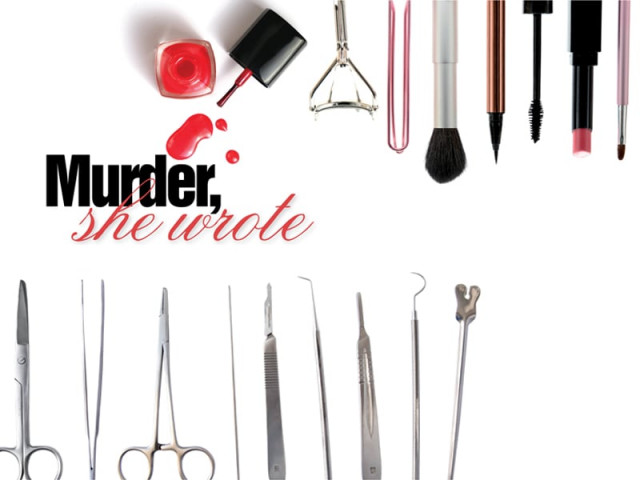
Outside the room with her body, however, a commotion has broken out in the half-lit shadows of the mortuary’s reception at Civil Hospital, Karachi. “Phanda kahan hai?” demands Dr Summaiya, the medico-legal officer (MLO), as she faces a tired policeman who brought the body in. “Where is the noose? Please tell me you have it.”
“We left it at the police station,” he replies sheepishly. “Ghalti ho gayi, we were in a rush.”
Dr Summaiya reins herself in as the victim’s family — the elderly husband and distraught young daughter — are watching from a few feet away. She proceeds to ask them questions. The woman was last seen by her family at 10 am when they left for work. The daughter weeps. The MLO takes furious notes. At least the family is not being suspiciously insistent on an autopsy. If this happens, Dr Summaiya’s sixth sense is alerted. “In nine out of 10 such cases it has been my experience that the culprit is the family,” she says. “They press for the autopsy to show how eager they are for insaaf [justice].”
This case seems to be different, at least from the information provided by the family. The woman had suffered from depression for years. She was consulting a psychiatrist at a large university hospital and was on medication. They found her hanging from the ceiling fan when they came home. A neighbour helped get her down.
As the gurney is wheeled inside, the MLO explains why the noose is so important. “You see, if this smart a** had brought the rope, we could have assessed the ligature against the damage to her neck. It would have helped us determine if she was strangled or hanged herself.”
Inside the mortuary, the stench is not overwhelmingly putrid, despite the lack of air conditioning. It’s closer to the sickly sweet smell of kitty-litter masked by an overdose of sanitiser and disinfectant. But then again, the body lying on the gurney was brought here just a few hours after it was found hanging from a fan in a Soldier Bazaar flat. It has not even begun to decompose.
“Wear these,” Dr Summaiya says, holding out two surgical masks — a double protection. She has sprayed her favourite Victoria’s Secret body spray on them. She sets her can of Mountain Dew down on a tray of surgical equipment near the body. “And if you faint, we have a bed ready for you too.” She gestures to a second stretcher parked in a corner.

As you inch closer to the table, you pick your way past stains on the floor. The canvas of tiles is still white but if you are not careful, your chappals will leave muddy prints from old dried blood. There is also the risk of slipping on the pool of diluted blood and water on the side.
The external exam begins. Dr Summaiya starts at the head. Her assistant turns to the limbs. Left, right, up, down. They move her about, trying to gauge the rigidity and assess the time of death. Has rigor mortis set in, they wonder out loud. “I am sick of telling the police we need the body with all the evidence,” she says, obviously still fuming over the missing noose. “The case can sometimes be deduced just by looking at the ligature. Such a crucial piece of evidence...”
They continue to inspect the victim. The chin is raised; the abrasion at the neck is closely examined.
“I’m really sorry aunty,” Dr Summaiya whispers. “I’m afraid we’ll have to open you up.”
All in a day’s work
For this MLO, this is a regular day at work. For the last decade, she has been doing an average of three post-mortems per week. In a bad week, she says it can go up to four or five. And while women medico-legal officers are reserved for female victims, they will also share the burden of men when there is a major disaster. On those days, Dr Summaiya loses count. The numbers are consistently rising each year, she says. With the majority of post-mortem cases being sent to Jinnah Postgraduate Medical Centre and Abbasi Shaheed Hospital, Civil hospital conducted approximately 350 in 2012. As violence and gun crime rise in a lazily policed Karachi, the numbers will get closer to 500 this year. Jinnah hospital is expected to take on 850 cases.

Given that the medico-legal stream of government service is hardly a coveted one, it is hard to understand why someone such as this animated MLO would want to work in an understaffed and equipped mortuary in one of Pakistan’s most violent cities. After her rigorous five-year MBBS degree and house jobs in pediatrics and surgery she could have worked anywhere else.

She insists that the profession chose her, instead of the other way around. “I enjoy my work,” she adds. “The investigation keeps me on my toes. When I arrive at a cause of death or write a particularly complicated rape or assault case, I feel exhilarated.”
But while she has no qualms doing gunshot cases, or even torture ones, she will not take on a baby’s case or that of a pregnant victim. “I have seen drill holes in their legs,” she says. She has seen missing fingernails and cigarette burns — even unmentionable torture wounds. She uses the word “masters” to describe the perpetrators. “They know when to stop mere centimeters from death. Some have experience and go about it in a scientific manner.”
Her science is an underappreciated one in a city that needs it the most. If it were not for her, perhaps the police would not have nabbed a serial killer who butchered three women.
“My estimate was [that he was] a man of short stature,” she says, going on to explain that the depth of the cut helped tell. A tall man would have swung from a height to deliver a high-impact and hence deeper cut, than a short man. “I deduced that he initially had no experience in cutting up body parts but was gaining experience with each body.”
She told the police investigating officer (IO) that he should look for a person with small conveyance but not a motorcycle. “I told him it was possibly someone from outside Karachi,” she recalls. One victim’s legs were wrapped in two pillow cases made of a different fabric with what seemed to be embroidery from around Multan.
Indeed, the perp turned out to be a rickshaw driver from Sadiqabad who hunted poor household helpers for a bit of sex, a “lust murderer” who later admitted to his crimes. “The IO got a letter of recommendation,” she says sourly. “I got a ‘Thank You’ phone call and a chance to speak at the police training center and teach those ignorant morons — so there’s your Dexter.”
That case was a highlight. There are many instances when the MLOs are not brave enough to name the killers. “Sometimes, we turn a deaf ear to what the dead may be saying to us.”

Government service
As with other government jobs, the world of post-mortem forensic pathology has its set of sins — bribes and politics of transfers are common. Some just skim the waters, others dive deep. Some MLOs make easy money by writing favourable cases, instead of working hard to run a clinic as a source of income on the side. Others ask for “compensation” to release a body to the family or weaken the other party’s case. There are instances when doctors take money just to write a case. And of course, the outcome can also be influenced by a fatter wad of cash.

These monetary incentives cannot, however, entirely motivate. Who wants to deal with pressure from armed gangs and trigger-happy party activists when there is no security? Sometimes exhumations need to be carried out much to the anger of families. “We just deal with it,” says Karachi-based Dr Abdul Haq, a former MLO who was recently promoted to senior medical officer in grade 19 (22 being the highest). “There is a lot of pressure on us. Not only are we overworked, the facilities and equipment we use are terrible.”
The mortuary doesn’t have anything worth calling a budget. (This is different from a morgue, such as Edhi’s at Sohrab Goth, where bodies can be kept in the required low temperatures). The mortuary staff has to even print their own post-mortem forms. Civil hospital does pay for some maintenance. Sometimes the police investigating officer helps arrange for material or the Edhi ambulances give them extra sheets. Dr Summaiya carries her own syringes and swabs. She scoffs that the advantage of taking bribes for some is that at least that MLO can pay for the equipment with the extra cash.
While MLOs are not authorised to perform post-mortems unless expressly sanctioned by the police, Dr Abdul Haq says at times parties circumvent the police and approach them directly. “‘Hum police ko dekh lenge,’ they say. We give in and give them the details of the injuries — what else can we do? We need to save our [own] lives.”
He describes the job as being the equivalent to being thrown into the deep sea — you either sink or swim. With a crushing load, gag-inducing work environment and no protection, he says it’s a little-respected line even among doctors. “On a bad night, one MLO will perform four post-mortems in a night and then also have other medico-legal cases to deal with, such as assault, rape, road accidents. Sometimes mothers come to us saying, ‘I need help, look what was done to my child’. We try to give the details to the best of our abilities given our limitations [equipment and facilities], but the weaker MLOs are bought. Jaisi report chahiye, waise paise chahiye hain.” Pay for the kind of report you want.
Viscera samples, which should reach a forensic lab straight from the MLO’s hand, are easy to sidetrack along the way. Police investigation officers are incompetent at best and lazy at worst, many of them are barely able to write details of the crime scene. They put it off and just press the MLO to get the job done.
Despite these difficulties, Dr Summaiya says she loves her work. She hopes to write a book about her experiences some day, even though a piece she once wrote titled, ‘When the Dead Talk’ was turned down by an English newspaper. “They told me it didn’t make for a good Sunday read,” she says. “But I don’t get creeped out at all. I just follow the path.” She was first posted to the police surgeon’s office in Karachi and never looked back, even investing in a postgraduate degree in forensic pathology.
“I personally don’t think I belong here. I need to be in a world where forensics are both respected and treated as a science. But I can’t help it. I am drawn to it. Even my colleagues think I am a bit of a freak for being so serious about this field,” she says. “I have people here who hate me and say I show off. I just do what I am good at. And that’s thinking like a criminal.”
She opens up the victim’s neck by making a five-inch vertical incision, chin down. She scrapes the fat away and removes some tissue. She feels around inside the woman’s neck. “Aha, it’s snapped right here, see?” she tells the assistant. She is holding out the horse-shoe shaped hyoid bone that sits above the thyroid. “It breaks when we compress the neck right there,” she adds, explaining that it is evident from the way the bone has snapped that the woman hanged herself. “Okay aunty, we’re giving you your stuff back. Sorry again about opening you up.” It’s rare to have such a clear-cut case, she says. This woman must have been seriously depressed.
As the woman is stitched up, we talk about politics and Karachi. She teases the assistant about being her ustaad or mentor. She takes a sip of her Mountain Dew. When I take my gloves off and move to the dirty sink in the corner, she warns me that there might be no water. Thankfully, there is.
Later, we talk about her family (a husband and two children). She has cats. She’s a passable cook, but she loves to write. She reads Harry Potter and enjoys watching the occasional Bollywood film (Yeh Jawani Hai Deewani is a recent favourite).
The ‘normal’ things in life keep her sane.
She proceeds to write the death certificate. Cause of death: Constriction of neck leading to asphyxiation.
Case closed.
Published in The Express Tribune, Sunday Magazine, September 8th, 2013.
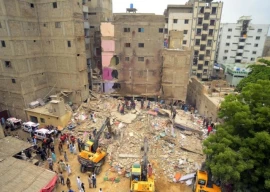
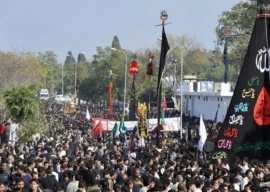

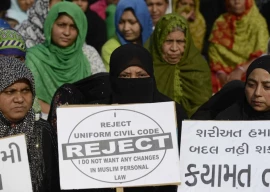
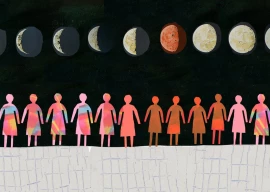













COMMENTS
Comments are moderated and generally will be posted if they are on-topic and not abusive.
For more information, please see our Comments FAQ